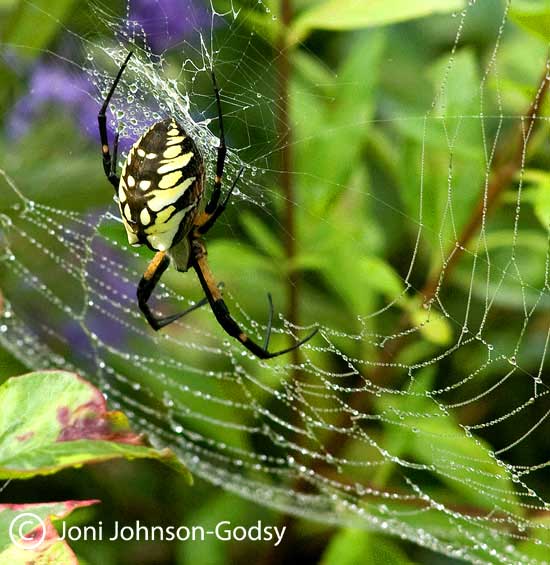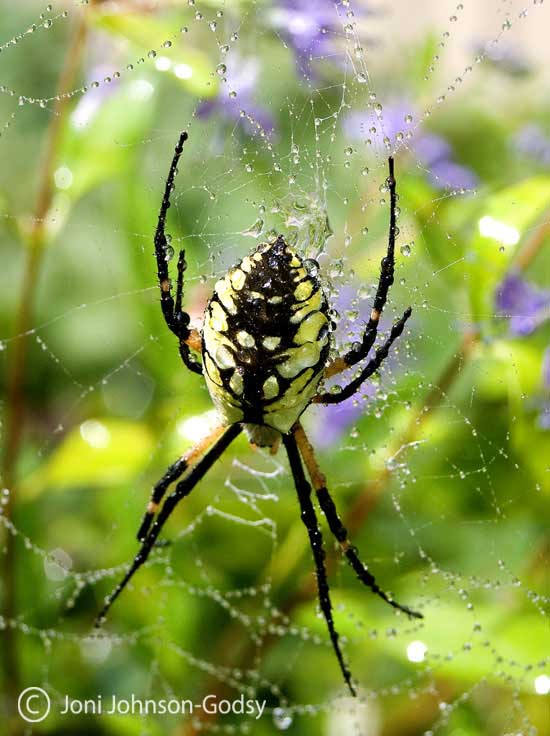Late summer in east-central Kansas is spider time. Summer begins to loosen its grip and signs of autumn are felt in cooler, dryer air. Huge webs created by an assortment of orb spiders begin to emerge en mass, draping themselves high in the tree tops, in our gardens and all over our decking. Some spiders spin in the evening and take down their great webs each morning. The beautiful black and Yellow argiope (often referred to the zipper spider, yellow garden spider, banana spider, or golden orb weaver) is one of the most beautiful of these great web engineers. Her web stays up day and night while she hangs upside down patiently waiting for dinner to come flying or crawling by. “Welcome to my home, said the spider to the fly…”
An adult female golden orb weaver (photos above and below) positions herself nicely for yummy things to come. A light misty rain rolling through in the morning lit her great web up with sparkly diamonds.
Females of this species are much larger than males. Although she is big enough to deliver a bite, she is not poisonous or aggressive. She liked my camera too, and proved to be quite photogenic.
The Golden orb weaver is capable of creating as many as seven different kinds of silk using several different glands that supply her spinnerets. The different types of silk have varying amino acid compositions and can vary in the stickiness of the silk as well as it’s thickness. She uses these differences as a capture strategy while building her great web.
In order to grow, spiders must periodically shed their exoskeletons. When the spider is about to shed, the inside layers of its skin are digested. The spider anchors her legs on part of her web, hanging upside down. The top of the carapace splits and the spider literally falls out of her old shell. She doesn’t fall to the ground because she is anchored by a strand of silk from her spinnerets. She expands in size as her new skin dries. She can even grow back a new limb at this time if one was lost before.
These beautiful creatures have a life span of only a year. So when the cold of winter begins to set in, our beautiful girl will see her last days.


